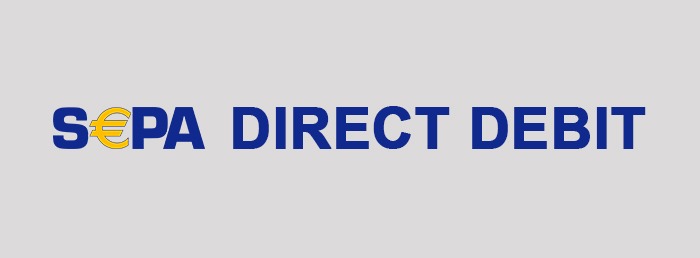Check out the most popular payment methods in Europe

Leading e-commerce payment methods in Europe. Part 1. Source: shutterstock.com
If you live in Europe and plan to visit another state, or maybe you don’t live in Europe at all but plan to visit EU countries, you might be wondering what the best way to pay for goods and services in one or another country is.
PaySpace Magazine offers you to find out more about the most popular payment methods in Europe, and which option is the best for a particular country.
According to the Payments and e-commerce report for Western and Central Europe conducted by PPRO Group, we have prepared four brief reports about the prevalent payment methods, and which countries use these options as the major ones.

Klarna Bank AB is a bank that launched in 2005 in Stockholm, Sweden. Klarna provides different services, such as direct payments, pay after delivery options, installment plans, and post-purchase payments. This financial institution has “Pay now”, “Pay later” (from 14 to 30 days, or in three equal installments without any interest), and “Slice it” (spread the sum of purchase) features for both individuals and merchants. Payment delay is the most used of the company’s features. The company also acts as a mediator between merchants and customers.
Klarna provides two types of checkout as well:
-
Klarna Checkout
This is a complete online checkout solution, which includes identification and payments.
-
Instore Checkout
This one offers a pay later option to the customers that experience shopping at your store.
This service is streamlined, well-organized, and has a user-friendly intuitive interface. You’ll just have to input your email, delivery address, and mobile number to start using it.
A mobile app will ensure you do not miss any payments with the help of notifications, while 24/7 customer service is ready to solve any issues at any time convenient for you.
This payment method is highly popular in Austria, Belgium, Denmark, Finland, Germany, Italy, Norway, Spain, Sweden, and the UK.

The Single Euro Payments Area (SEPA) is a European Union (EU) initiative to harmonize payments across the eurozone. The primary aim is to streamline payments in Europe by creating one single market for euro-denominated payments.
Therefore, the European Payments Council (EPC) has launched three SEPA payments options:
- SEPA Direct Debit (SDD)
- SEPA Credit Transfer (SCT)
- SEPA Cards Framework (SCF)
SEPA Direct Debit has now been implemented in all eurozone countries and non-eurozone SEPA countries. Thus, in all these states all Euro-denominated payments must be collected via the SEPA payment scheme.
SEPA Direct Debit makes it possible for individuals and businesses to make international direct debit payments in EUR currency. You are allowed to use any account currency compliant with SEPA rules, but the transaction would be always carried out in euros.
In other words, this payment method allows merchants/service providers to charge clients under one condition: a customer has to grant the right (to merchant/service provider) to charge their account automatically (referred to Direct Debit Mandate).
Major features of SEPA Direct Debit
- SEPA Direct Debit is pull-based. Once given a mandate by their customer it is the merchant who initiates payments.
- SEPA Direct Debit payments are bank-to-bank. There are no card networks involved in the SEPA Direct Debit scheme. All communications happen directly between the banks.
SEPA Direct Debit has two key options: SEPA Core Direct Debit and SEPA B2B Direct Debit. The B2B option is accessible only in the case of one needing to carry out a Direct Debit transaction from other businesses.
This payment method is highly popular in Austria, Belgium, Germany, Greece, Hungary, Italy, Netherlands, Portugal, and Spain.

In the previous point, we briefed you on SEPA in general, and its SEPA Direct Debit. Thus, SEPA Credit Transfer (SCT), also known as SEPA Wire Transfer, is another Single Euro Payments Area option, which was introduced in 2008 by the European Payment Council.
SEPA Credit Transfer makes it possible for payment service providers to conduct cross-border payment processing and to offer it to salespersons in the area of 34 SEPA states. If a payment service provider wants to implement cooperation, it has to be a member of the SEPA scheme.
All transfers are processed in the euro currency. With SCT, the clients are able to transfer money to any account in SEPA.
The difference between SDD and SCT:
SEPA Wire Transfer is just a common, one-time bank transfer within the SEPA zone, made in euro currency. It debits a euro account and credits another euro account.
SEPA Direct Debit – it is a type of recurring payment in the euro currency within the SEPA area.
This payment method is highly popular in Austria, Greece, Hungary, Italy, Netherlands, Portugal, and Spain.

Trustly is a Swedish FinTech company, which was launched in 2008. This firm specializes in Online Banking e-payments and provides its services via PayPal and TrаnsfеrWisе.
The service has no compulsory registration, which saves a lot of time for its clients. The primary aim of its service is to offer customers the ability to carry out payments swiftly and smoothly in real-time.
Moreover, this service is adapted for transfers, made from a smartphone or tablet.
This option offers almost literally “instant transfers”, but it is not as secure as conventional banking ones (especially if you don’t have a two-factor authentication). However, banking transactions can take up to five days, which is obviously inconvenient.
This payment method is highly popular in Belgium, Denmark, France, Greece, Hungary, Italy, Norway, and Slovakia.
SEE ALSO:









